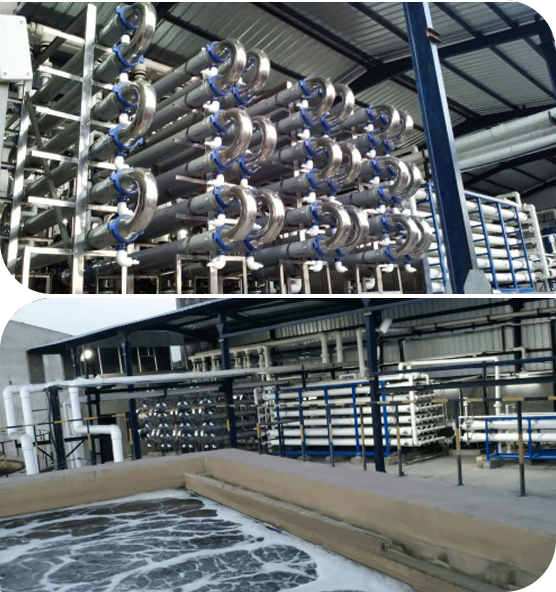
Waterman Engineers Australia is one of the foremost brands of Zero Liquid Discharge technique. A ZLD system is actually a treatment method course of action which happens to be used to eliminate all the liquid squander from the program. The aim of ZLD water therapy is to reduce wastewater economically and produce potable h2o that is definitely in shape for typical use. Zero discharge method is a complicated cure strategy that comprises ultrafiltration, reverse osmosis, evaporation and fractional electro deionization. And we are a well-regarded supplier of ZLD units.
In lots of Industries, like power, oil & gasoline, chemicals, mining and Some others, a great deal of wastewater is created that must be managed. Conventionally, this discharge of wastewater is finished by way of a plant outfall to the surface area h2o entire body like an evaporation pond, or occasionally deep effectively injected. These tactics bring about lots of environmental considerations by the general public in many regions of the earth, as water can be a scarce resource and its administration need to be monitored. These considerations have resulted during the institution of ZLD processes by several industries to reduce their environmental footprint and improve sustainability. And, Waterman Engineers Australia are ideal ZLD suppliers you can find for this system.
Homes OF ZERO LIQUID DISCHARGE Process
The Attributes of the Zero Liquid Discharge system may vary depending upon the specific style and technological innovation applied. Having said that, some common properties of ZLD systems consist of:
Water Conservation: Certainly one of the primary objectives of ZLD systems is to preserve drinking water by reducing the discharge of liquid squander in the ecosystem.
High H2o Purity: ZLD devices are meant to produce superior-excellent drinking water that's totally free from impurities and contaminants, that makes them appropriate for use in many industrial procedures.
Versatility: ZLD units in many cases are made to accommodate a broad selection of enter liquid streams, which makes them functional and ideal for use in various industries.
Innovative Wastewater Therapy: Zero liquid discharge units use Superior wastewater treatment techniques to remove impurities and contaminants through the effluent, creating significant-high quality drinking water.
Squander Reduction: ZLD systems assistance lower waste by minimizing the quantity of liquid squander that needs to be disposed of and by generating a concentrated, good waste materials that could be properly disposed of.
Power Effectiveness: ZLD devices can be Power-intensive due to superior Power needs of evaporation together with other wastewater treatment procedures. However, developments in engineering are generating Zero liquid discharge programs additional Electricity-successful and value-powerful.
Waterman Engineers Australia manufactures Zero Liquid Discharge (ZLD) programs built to take away all liquid waste, aiming to provide potable water and lower environmental effects. Their ZLD devices commonly incorporate ultrafiltration, reverse osmosis, evaporation, and fractional electro deionization. Essential technologies used are Slipping Film Brine Concentrators, Compelled Circulation Crystallizer, and Some others, by using a two-stage means of pre-concentration and evaporation/crystallization to recover and reuse h2o. These techniques are adaptable to various industries, emphasizing h2o conservation, large h2o purity, waste reduction, and Electrical power effectiveness. Technical requirements are diverse and customizable, considering variables like water supply, flow fee, and feed h2o good quality.
The necessity for Zero Liquid Discharge (ZLD) techniques occurs in the necessity to deal with environmental issues relevant to water scarcity and pollution. In industries like electric power, oil & gas, and mining, extensive quantities of wastewater are created. Typically, this wastewater is discharged into bodies of drinking water, causing pollution and depleting clear drinking water means. ZLD methods goal to reduce these impacts by managing and recycling wastewater within the industrial approach, therefore conserving h2o, lessening squander, and advertising sustainability.
When thinking about the specialized requirements of the Zero Liquid Discharge (ZLD) system, crucial factors to deal with include the water source it'll deal with, the program's circulation fee, the caliber of feed drinking water, the stages of therapy involved, the recovery level of h2o, procedures for focus disposal, resources of building, working circumstances, and system automation and control. Zld System Manufacturer Zero Liquid Discharge System These things make sure the program's usefulness, durability, and performance in dealing with and recycling industrial wastewater.
Zero Liquid Discharge (ZLD) plants give Added benefits for example water conservation, squander reduction, and pollution avoidance, contributing to environmental sustainability. They're relevant in industries like electricity generation, oil and gasoline, chemicals, and mining, where by they help in managing industrial wastewater proficiently, lowering the ecological footprint, and complying with strict environmental restrictions. These methods are very important in places facing drinking water scarcity and for industries aiming to further improve their sustainability and operational efficiency.
FAQs for your Zero Liquid Discharge (ZLD) method generally address its operational ideas, Price tag-efficiency, servicing specifications, environmental impression, applicability throughout numerous industries, and regulatory compliance. These inquiries assistance consumers fully grasp the system's Rewards, complex requires, and suitability for his or her specific wastewater management wants.
1. Zero Liquid Discharge (ZLD) is often a wastewater treatment procedure created to do away with all liquid squander.
two. The process's parts are affected by the precise industrial course of action, wastewater composition, and regulatory requirements.
three. Effluent procedure crops take out pollutants from textile effluents to prevent environmental contamination.
four. Pros involve h2o conservation, air pollution reduction, and regulatory compliance.
5. The objective is to minimize environmental impact by recycling h2o and lessening squander.
6-nine. Effluent cure vegetation are stages in wastewater treatment: primary (Actual physical separation), secondary (biological therapy), and tertiary (Sophisticated treatment).
ten. Unit functions incorporate filtration, sedimentation, biological procedure, and disinfection.
eleven. Limiting parameters are things that have an impact on the remedy's efficiency, like pH and contaminant focus.
twelve. Style and design issues consist of move fee, effluent composition, and preferred quality of dealt with water.